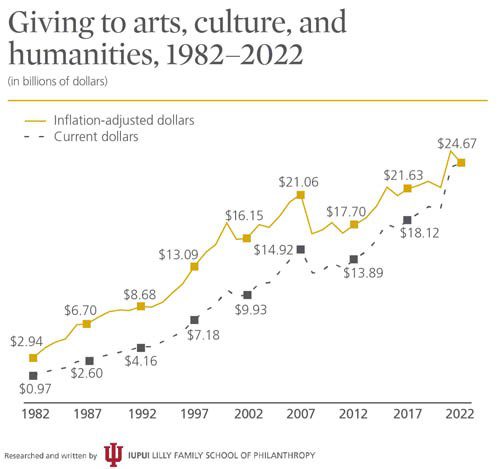
Board or Bored: The Consequential Role of Nonprofit Boards
According to USAFacts,* there were 1.97M non-profit organizations operating in the U.S. in 2022. Of those, 1.48M were 501(c)(3) tax-exempt organizations, according to the IRS. Chances are pretty good that most, if not all of those 1.48M organizations have a board responsible for providing governance, strategic direction, and oversight. Board sizes vary dramatically; but for the sake of argument, let’s assume the average board size is 15. (Note that, according to BoardSource, in 2007, the median board size, excluding those for churches, was 15). That means that, collectively, there are more than 22M non-profit board members in this country.
Board members are a tremendous source of expertise, financial support, and contacts. They help to ensure that organizations adhere to their missions, and that they remain accountable to their stakeholders, including the communities they service, their donors, and their beneficiaries. Their collective wisdom helps to steer the organization toward achieving its goals, while maintaining financial stability and legal compliance. Volunteer boards (we hope!) contribute to fundraising efforts and resource mobilization and play an active role in cultivating relationships with donors and other supporters, advocating for the organization’s cause, and leveraging their networks to secure funding. In the not-for-profit space, funding is the lifeblood that fuels an organization’s ability to fulfill its mission.
As is true in many sectors, non-profit boards face numerous challenges today. The complexities associated with governance are increasingly difficult in a highly regulated environment. Thus, they must remain informed about legal obligations, financial reporting standards and best practices in governance to mitigate risk and maintain public trust. They must respond to demands for increased transparency and accountability that result from intense public scrutiny and regulatory requirements. And, boards must ensure they include diversity of skills, perspectives, and demographics crucial to effective decision-making and representation of the community their organization serves.
Boards can and should be champions for their organizations, notwithstanding the increased complexities associated with serving, standing with them in times of crisis. It was much easier to effectively fulfill the responsibilities of being a board member when the work of non-profits, especially institutions of higher learning, faced less onerous regulation, and when their work was less politicized. Nevertheless, these roles have seldom been more crucial to the overall health, viability, and positive impact of so many not-for-profit organizations.
What does all of this have to do with our work in philanthropy? Part of our responsibility is to make sure our board members are well-equipped to do their work on behalf of our organizations. Through effective orientation of new board members, ongoing training regarding good governance practices, and clear and transparent reporting and communication, we can keep our board members inspired and motivated to do their consequential work on behalf of our organizations.
The demand for philanthropic support continues to increase, and those of us in the fundraising profession face those demands daily. However, when done well, the investment of our time, effort, and energy in supporting, cultivating, and engaging our board members will generate real return on investment.
*USAFacts is a not-for-profit, nonpartisan civic initiative that strives to make government data easy for all Americans to access and understand

From the desk of
Jane DiFolco Parker Partner
Giving to the Arts
- Giving to the arts, culture, and humanities subsector amounted to 5% of total giving in 2022 and was estimated at $24.67 billion.
- Giving to this subsector increased 2.9% from 2021. Adjusted for inflation, giving to these organizations declined by 4.7%.
- The total amount contributed reached its second-highest value in 2022 when adjusted for inflation.
- According to the Benchmarks 2023 report by M+R, online revenue for cultural organizations decreased by 13% in 2022 after growing 21% in 2021.

How’s Your Revenue Stream?
Nonprofits face continual financial pressures around revenue streams, with 57% of financial managers saying they need somewhat or much more stable cash flow, and nearly 7 in 10 sharing that they need more revenue streams today than they did two years ago.
That need for additional revenue streams comes at a time when 56% of nonprofit financial managers say their organization have at least six funding sources, and 28% have at least 10. This is according to the 2024 research study from Community Brands Nonprofit Solutions, titled The State of Nonprofit Fundraising, Technology, and Operations: Impact on Mission Sustainability.
When it came to revenue streams, the list started with “donations” at 73% and dropping down to 23% of use for “text-to-give.” The remaining revenue streams cited were:
* Grants 59%
* Events 54%
* Corporate Giving 46%
* Recurring Giving 45%
* Memberships 36%
* Peer-to-Peer giving 33%
* Stock Donations 33%
* Silent Auctions 30%
News Bytes from the Culture Desk
National Symphony Orchestra (DC) received a $10 million gift from Roger Sant for its endowment. A long-time member of the orchestra’s Board of Directors, Sant has given the organization more than $35 million, including this latest pledge. He co-founded the AES Corporation, an international electric-power company, in Arlington, Va.
Gary Ginstling, President and chief executive of the New York Philharmonic, resigned after a year on the job. Ginstling told The New York Times that the orchestra, which came through the pandemic in better shape than many of its counterparts, “needs a different type of leadership.”
BalletX (Philadelphia) received a $7.4 million bequest from Joan DeJean to support a range of programs. Company leaders say they plan to use $1 million of the bequest to support operations for the troupe’s next two performing seasons. The rest will establish the Joan DeJean Innovation Fund to support future programs and company needs.
Sherrie Westin has been promoted from president to CEO of Sesame Workshop. She is its first woman leader since co-founder Joan Ganz Cooney stepped down from the helm in 1990. Westin started working there in 1998 and has been interim CEO since February.
The Chicago Symphony Orchestra Association received a $10 million partial challenge grant from the Tawani Foundation toward its $175 million fundraising campaign to bolster its endowment, pay down debt, and add to its musicians’ pension plan. Of the total, $5 million was given outright and the remaining $5 million has been pledged to match gifts from other donors to the campaign.
We Know the Performing Arts
For more than 35 years, Alexander Haas has been a fixture in the nonprofit community. We are honored to have worked with leading performing arts and cultural organizations across the country that help communities be a better place to live. Just ask our clients.
Face It: Arts Organizations are Different
Our services aren’t cookie cutter. We don’t operate with a boilerplate, merely changing names and locations. We craft each and every service we provide to match your organization’s unique needs, wants and abilities. We work hard and expect you to do the same. Together we can help you transform your arts organization, your fundraising, and the unique community you serve.
Whether your need is in Capital Campaign, Annual Fund Campaign, Major Gifts, Leadership Annual Giving, Planned Giving or all of the above, we take a fresh approach to nonprofit fundraising.


